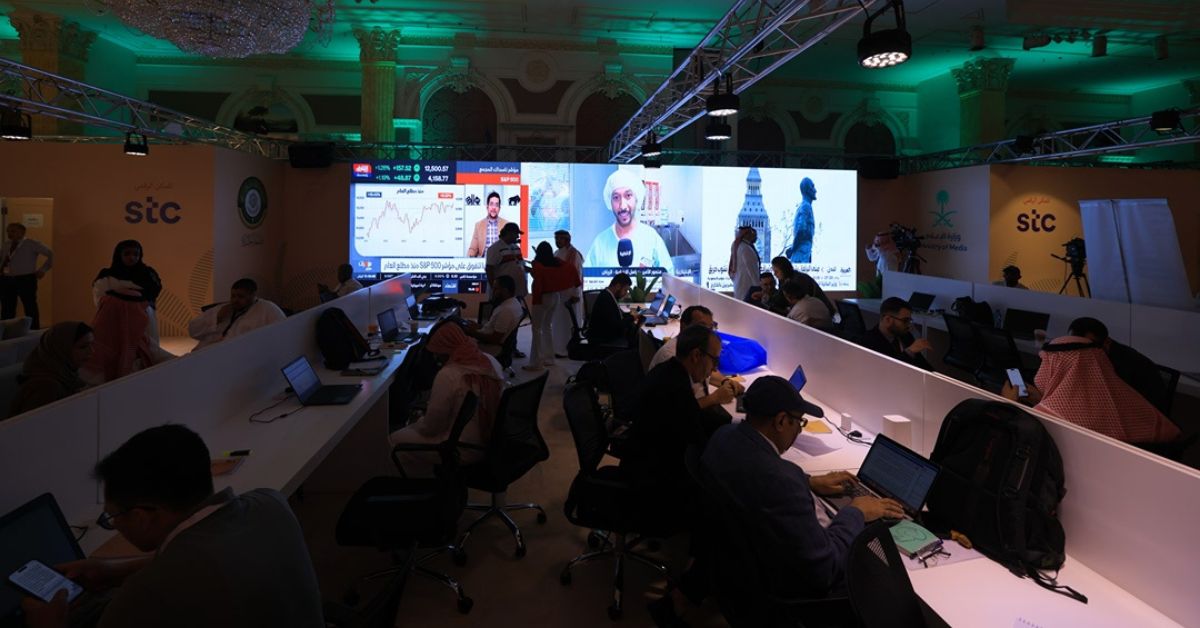DUBAI, UAE — Unlike other markets around the globe, which have seen the telecom sector pressured by commoditization and increased competition, the GCC market is still growing and boasting healthy margins.
In 2023, STC Saudi Arabia had the highest brand value in the Middle East region, amounting to more than US$ 12.3 billion. It is also the second strongest telecoms brand in the Middle East, with a brand strength index score of 87 out of 100 and a corresponding AAA rating.
Etisalat by e& in the UAE is the second most valuable telecoms brand in the Middle East, with a brand value worth approximately US$ 10.5 billion. The e& group operates in 16 countries and has the most valuable portfolio of telecom brands in the Middle East and Africa, valued at over US$14 billion.
The UAE is a regional leader when it comes to telecommunication infrastructure, in addition to being a top player in the global telecommunication sector. Saudi Arabia is also among the top ten countries worldwide, with a high internet penetration rate.
How widespread is 5G technology in today's GCC market? According to the latest MEA Broadband Index report by Nokia, the GCC region boasts one of the most mature 5G device ecosystems, with approximately 20 percent of smartphones equipped with 5G capabilities. Furthermore, it is projected that 5G subscribers in the GCC will reach 94 million by 2027, accounting for 75 percent of total subscribers, with Saudi Arabia contributing to over 60 percent of new subscribers. This increasing 5G penetration will accelerate the adoption of other transformative technologies such as IoT, AI, cloud, and edge computing, which are instrumental in driving national transformation programs like KSA's Vision 2030. Consequently, telecom operators in the region are expected to generate data revenues of US$21 billion by 2027.
According to Hani Zein, Partner at Strategy& Middle East, growth in the UAE and Saudi markets is expected in both the consumer and enterprise segments, owing to the influx of expats in the UAE as well as the expected growth from Saudi Vision 2030 programs and Mega Developments. These markets, however, are expected to face regulatory pressures, posing a significant risk to Telcos’ top and bottom lines.
A previous study by Strategy & revealed that two trends are combining to transform the global telecom industry over the next several years. They will fundamentally alter how telecom companies operate as well as how customers consume telecom services.
The first trend is commoditization, narrowing market share and shrinking spreads between low- and high-priced services.
The second trend is convergence, which refers to the continued erosion of the boundaries between fixed and mobile telecom services. Many new technologies are bringing about the long-predicted marriage of these two sectors, though at very different rates in different markets.
Given the expected commoditization of the sector in the GCC, Zein believes that diversification will be critical for telecom operators in the region to maintain a healthy growth trajectory.
“One of the key challenges that telecom operators face is to build organically or inorganically the needed capabilities to deliver on such aspirations and to repurpose their teams to become end-to-end digital transformation providers positioning their ICT products as enablement services.” As a result, Telco players are actively working on transforming internally in an effort to diversify their business away from traditional connectivity into new growth avenues such as fintech, gaming, healthcare, cybersecurity, cloud, IoT, and emerging technologies,” he told TRENDS.

The corporate market, on the other hand, remains the industry’s favorite. In addition to providing telecom services, some telco companies buy stock and invest in other businesses and startups.
Ramzi Khoury, Partner at Strategy&, agrees that the role of telecommunications providers is undergoing a significant change.
“Providing connectivity and high data speed will no longer be their primary focus,” he stated.
“During the next decade, operators will play a vital role in enabling public- and private-sector digital transformations.”
According to him, to become key enablers of digital transformation, operators need to rapidly augment their existing capabilities through:
•Inorganic activities: In 2022, the TMT sector dominated the global deals market, accounting for approximately one-quarter of both deal volume and value. (For example, in June 2023, the Belgian division of telco group Orange completed its acquisition of regional quad-play services operator VOO, with a valuation of EUR 1.8 Bn for 100 percent shares.)
•Corporate venturing: Making strategic investments in the growing number of technology startups globally. (For example, Saudi Telecom Company has an independently managed venture capital fund that invests in information technology, telecommunications, and digital media. In 2022, UAE’s e& also launched a $250 million venture capital fund to attract, engage and support startups and provide them with access to investor and expert networks.)
•Joint Ventures (JVs): Co-investing or combining forces with other players to ensure synergies and share risks. (As examples, in February 2023, European telcos Deutsche Telekom, Orange, Telefonica, and Vodafone announced a joint venture for “the implementation of a privacy-by-design digital marketing technology platform in Europe that could benefit consumers, advertisers and publishers alike.” Additionally, Saudi Telecom Company launched a JV with PIF to provide IoT solutions in 3 key verticals and another JV with Alibaba Cloud, eWTP Arabia, and SCAI to offer public cloud solutions.)
Major opportunities
Despite its fast-paced growth, GCC’s ICT market remains largely focused on connectivity and services, lagging behind more mature markets in emerging technologies mainly due to gaps in supply and innovation spending, tech hardware, platforms, and software.
However, according to both Zein and Khoury, there are several opportunities for GCC telecom players to grow the market, including:
• Driving adoption of 5G: continue to roll out 5G networks to provide better broadband speeds and latencies while promoting 5G use cases adoption (e.g., AR/ VR, cloud gaming, industrial automation, IoT solutions, etc.)
• Expanding into “Tech and Digital” adjacencies: Pursue growth opportunities in technology solutions and digital (e.g., cloud, cybersecurity, FinTech, Edtech, Insurtech, etc.)
• Pursuing digital infrastructure monetization opportunities: Consider more effective ways to monetize and create value from infrastructure through carve-out and/or sharing of assets
• Developing alternative broadband connectivity models: Invest in non-terrestrial network models (e.g., LEO satellites) to offer wide coverage reaching underserved or remote areas
• Capturing growth in software/ SaaS: Focus on growing software market segment driven by enterprise digital transformations, and proliferation/ adoption of SaaS business models
• Leveraging the rise of AI/ ML across industries: Build AI/ ML capabilities, enabling automation and predictive analytics across sectors
• Building multi-cloud environments integrated to the edge: Advance in multi-cloud environments integrated to an increasingly smarter edge (comprising IoT devices) to enable fast processing and storage of large amounts of data
• Enhancing digital engagement through immersive technologies: Capitalize on the growth of extended reality (XR) shaping the metaverse and future online social and business interactions
At a glance * Global telecom industry trends of commoditization and convergence are transforming telecom companies' operations and customer behavior. * Diversification is crucial for GCC telecom operators to maintain growth amid commoditization. * Inorganic activities, corporate venturing, and joint ventures are key strategies for telecom operators to augment capabilities. * Opportunities for growth include 5G adoption, expansion into tech and digital adjacencies, digital infrastructure monetization, alternative broadband connectivity models, software/SaaS market capture, AI/ML integration, multi-cloud environments, and immersive technologies. * GCC is one of the most mature regions in terms of 5G device ecosystem, with 20% of smartphones possessing 5G capabilities. * 5G subscribers in GCC are projected to reach 94 million by 2027, with Saudi Arabia leading the growth. * Increasing 5G penetration will drive adoption of IoT, AI, cloud, and edge computing, boosting telcos' data revenues to reach US$ 21 billion by 2027.







